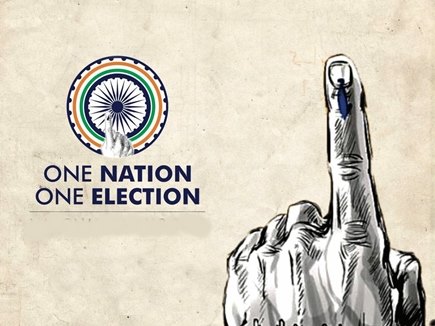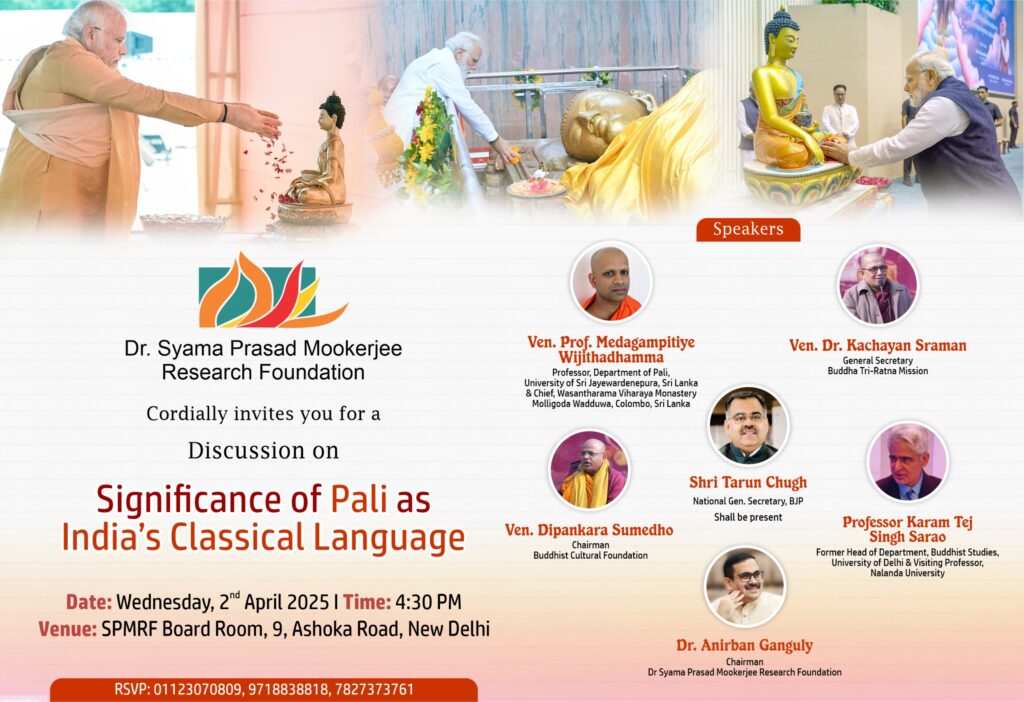Kishore Desai
It won’t be unreasonable to state that the Indian polity is perennially in an election mode.Elections keep happeningalmost all the time. Between March 2014 and May 2014, elections to the current LokSabhawere held. Along with the LokSabha, elections for 4 State Assemblies were also held. Shortly thereafter, in October 2014, elections to the assemblies of Maharashtra & Haryana were held. That was followed by Jharkhand & J&K in December 2014 and NCT of Delhi in Feb 2015. This year,elections at 4 state assemblies have alreadytaken placein February/March. Later, Karnataka assembly elections were held in May 2018. Going forward, elections to 4 more State Assemblies are likely to be announced in October 2018. Add elections to the third tier of Government (Panchayati Raj institutions / Municipal bodies in rural and urban areas), bye-elections etc., the number of elections that keep happening would increase substantially.
Such a situation negatively impacts development and governance in several ways. It hampers development activities due to imposition of Model Code of Conduct withinareas where elections are being held.Analysis shows that Model Code of Conduct stays applicable for, on an average, about 4 months or more every year.This situation also pushes costs for the public exchequer (as governments have to incur election management costs several times every year), leads to engagement of government staff and security forces for prolonged periods of time and vitiates the general socio-political harmony as noises related to caste, religion and communal issues shoots up during such times. Besides these, the impact of frequent elections on governance and policy making is particularly noteworthy. Frequent elections force governments and political parties to remain in perpetual “campaigning” mode.As a result, short-sighted populist and politically safe measures get priority over difficult structural reformswhich are usually difficult to implement and bring in political risks as well. This leads to sub-optimal governance and adversely impacts the design and delivery of public policies and developmental measures.
It is therefore not surprising why a broad consensus is gradually building upto stopthis frequent election cycleand institute the concept of “Simultaneous Elections” or “One Nation One Election” instead.In the recent past, several prominent stakeholders including the President, the Prime Minister, senior ministers of the Cabinet, Chief Ministers, representatives of political parties, constitutional authorities, think tanks, civil society, academia, industry and common people have voiced their supportfor this transformational reform. Several expert committees have also extended their supportfor this. In the year 1999, the Law Commission of India headed byJustice B.P. Jeevan Reddy in its One Hundred Seventieth Report on Reform of Electoral Laws recommended simultaneous elections to LokSabha and State legislative assemblies while examining measures for improving the electoral system in the country. The Department related Parliamentary standing committee on personnel, public grievances, law and justice in its 79th report (submitted to the Parliament in December 2015) endorsed holding simultaneous elections to LokSabha and State legislative assemblies. The NITI Aayog discussion note (titled “Analysis of Simultaneous Elections: The What, Why and the How”), of which I am one of the co-authors,supported this idea after analyzing relevant issues in detail. And most recently, the Law Commission of India also backed simultaneous elections in its draft report which has been made public.
That said, operationalizing and sustaining the cycle of simultaneous election remains a huge challenge. Doing so would require addressing a host of considerations, such as: a) how would terms of Assemblies/LokSabha be synchronized for the first time?’ b) would it be feasible to extend or curtail the existing terms of some state assemblies to facilitate simultaneous elections?’ c) if elections are held simultaneously, what would happen in case the government loses majority in between term, either in LokSabha or in state assemblies?; d) should the term of LokSabha and assemblies be fixed?; and e)is it practically feasible to conduct elections at such a massive scale – considering logistics, security and manpower resource requirements?
In the NITI Aayog note, we had attempted to work out a detailed proposal for implementing simultaneous elections. The proposal attempted to identify feasible options for some of the challenges listed above.The key elements of the proposal are briefly presentedinthe table below:
| Relevant Issues | Proposed solutions |
| How to synchronize terms of State Assemblies | Proposed two-phase elections as the feasible solution. This concept is in-sync with the suggestions of the Department related Parliamentary Standing committee on Personnel, Public grievances, Law and justice (given in its 79th report):
Phase I (LokSabha + 14 States) Phase II (remaining States)(to be held 30 months after the Phase I) Would need one-time extension or curtailment of terms of various State Assemblies. Constitutional and Statutory provisions to be amended accordingly. |
| Should the term of Assembly / LokSabha be fixed? | Fixing term of Assembly/LokSabha not proposed. This means that once constituted, Assembly/LokSabha may follow the election cycle synchronous with the Phases outlined above. |
| How to ensure continuity in simultaneous elections? | To ensure continuity, propose linking term of LokSabha / Assembly with the two phased election cycle rather than the normal term of 5 years from the date of the first sitting. The relevant recommendations of Election Commission on this particular matter have beentweaked. The detailed note also discusses various cases for illustration purposes. |
| Operational feasibility | There may be incremental pressure on resource requirements (EVM’s, personnel etc.). However, this may optimizeoverall election expenditure of public exchequer. |
For more details, the note may be accessed from NITI Aayog website at: http://niti.gov.in/writereaddata/files/document_publication/Note%20on%20Simultaneous%20Elections.pdf
The above proposals attempt presenting a workable solution so that stakeholders and subject matter experts can study these proposals and dig further deeper into this debate. The point still being that the need for this structural reform is immediate. Implementing a feasible solutionwould not only require constitutional and statutory amendmentsbut it would also requireextensive consensusamongst key stakeholders, particularly political parties across the spectrum. People deserve the best possible administrative system and not merely a passable one. The constitution does provide sufficient room to make amendments to suit the changing times and needs of the country. This flexibility is not just an enabling tool, but in fact is a responsibility ofgovernments and politicians to provide the best governance. Unlike the past, this time the nudge to seriously considersimultaneous elections has come from the highest offices in the country. Constitutional offices such as the Election Commission and the Law Commission are also in general sync with the need of implementing this idea.Hopefully, the ongoing constructive debate would soon convergetowards creating grounds for implementation and this could in turn be a stepping stone towards improved governance and a larger initiation of “electoral reforms” – a desperately needed measure to re-boot the political system for New India.
(Officer on Special Duty (NITI Aayog and Economic Advisory Council to the Prime Minister (EAC-PM),
(The views expressed are the author's own and do not necessarily reflect the position of the organisation)


